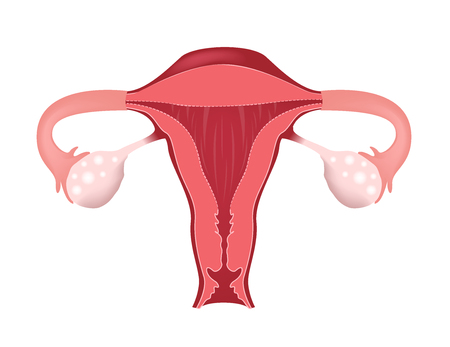Understanding Skin Phototypes
When considering the best practices for selecting laser parameters for darker skin tones, it is essential to begin with a thorough understanding of skin phototypes. The Fitzpatrick scale, widely used in the UK and globally, provides an overview by classifying skin into six types based on its response to ultraviolet light—ranging from Type I (very fair) to Type VI (deeply pigmented dark brown or black). Darker skin tones typically fall within Types IV, V, and VI. These phototypes are characterised by higher melanin content, which offers natural protection against UV radiation but also presents unique challenges when undergoing laser treatments.
Recognising the variations within these skin types is particularly important in the diverse UK population, where subtle differences in undertones and pigmentation can significantly impact clinical outcomes. For instance, not all patients with darker skin will react identically to laser energy; some may have more sensitive or reactive skin due to mixed heritage or regional genetic variations. Proper identification and assessment of these characteristics are critical for ensuring both safety and efficacy during laser procedures.
By appreciating the nuances of the Fitzpatrick scale and acknowledging the spectrum of darker skin tones seen in clinical practice across the UK, practitioners can tailor their approach and select appropriate laser parameters that minimise risks such as hyperpigmentation or burns while optimising therapeutic results.
Risks of Laser Treatments on Darker Skin
Laser treatments offer significant benefits in dermatology, but when it comes to darker skin tones, the risk profile changes considerably. Understanding these risks is crucial for both practitioners and patients within the diverse British community. Individuals with Fitzpatrick skin types IV to VI—common among people of African, Caribbean, South Asian, and Middle Eastern descent in the UK—face higher chances of certain complications if laser parameters are not carefully selected.
Potential Complications
The most frequent adverse effects seen in darker skin tones are hyperpigmentation, hypopigmentation, and scarring. Hyperpigmentation refers to the darkening of the treated area due to an increase in melanin production following laser exposure. Conversely, hypopigmentation involves loss of pigment, resulting in lighter patches that can be cosmetically distressing. Scarring, though less common with modern devices, remains a concern especially if inappropriate settings or poorly maintained equipment are used.
Complication Examples by Community
| Community | Common Complication | Typical Clinical Example |
|---|---|---|
| African & Caribbean British | Post-inflammatory hyperpigmentation (PIH) | Dark patches following hair removal on the jawline or legs |
| South Asian British | Hypopigmentation | Lighter spots appearing after treatment for acne scars on cheeks or forehead |
| Middle Eastern British | Keloid or hypertrophic scarring | Raised scars after laser therapy for ingrown hairs on neck or beard area |
Cultural Sensitivity and Patient Education
Within the UK’s multicultural society, recognising how these complications affect self-esteem and social interactions is important. For example, visible pigmentary changes may carry particular stigma in some communities, influencing willingness to seek further treatment. Practitioners must provide thorough pre-treatment counselling and realistic expectations about outcomes and risks.

3. Selecting Appropriate Laser Technology
When treating individuals with darker skin tones, the choice of laser technology is paramount to achieving both safety and effective results. Not all laser devices are created equal, and certain wavelengths are far more suitable for higher Fitzpatrick skin types due to their interaction with melanin. Nd:YAG lasers, with a wavelength of 1064 nm, have emerged as the gold standard for darker skin. Their deeper penetration allows them to bypass the epidermal melanin, significantly reducing the risk of hyperpigmentation, burns, or scarring. This makes Nd:YAG devices highly reliable for hair removal and other dermatological procedures in patients with increased melanin content.
On the other hand, diode lasers (typically operating at 800–810 nm) can also be considered for certain procedures on darker skin types. They offer a good balance between efficacy and safety when used with correct settings and adequate cooling mechanisms. However, they require careful adjustment since their absorption by melanin is slightly higher than Nd:YAG lasers, meaning there is an increased potential for side effects if not managed properly.
The rationale behind these choices lies in how different wavelengths interact with the skin’s chromophores. Longer wavelengths, such as those produced by Nd:YAG systems, are less readily absorbed by melanin in the epidermis but still target deeper structures like hair follicles or vascular lesions efficiently. This selectivity minimises damage to surrounding tissue and reduces downtime—an essential consideration in maintaining patient satisfaction and safety within the UK’s diverse population.
Ultimately, best practice dictates that practitioners not only choose equipment based on its technical merits but also tailor their approach to each patient’s unique skin characteristics. Investing in modern platforms that provide customisable settings—such as variable pulse durations and integrated cooling—ensures optimal outcomes while adhering to high standards of care recognised across British clinics.
4. Optimising Laser Settings
When treating darker skin tones, careful adjustment of laser parameters is essential to achieve effective results while minimising the risk of adverse effects such as post-inflammatory hyperpigmentation or scarring. Patients from various ethnic backgrounds in the UK present unique challenges due to increased melanin content, which requires practitioners to tailor their approach for safety and efficacy. The three most critical settings to consider are fluence, pulse duration, and spot size.
Fluence (Energy Density)
Lower fluence levels are generally recommended for darker skin types to prevent excessive heat absorption by epidermal melanin. Starting with a conservative setting and gradually increasing based on patient response is best practice. Practitioners should also consider individual variations in skin thickness and sensitivity common among different ethnicities in the UK.
Pulse Duration (Exposure Time)
Longer pulse durations are preferable when treating patients with higher Fitzpatrick skin types (IV–VI). This allows for more controlled energy delivery, reducing the likelihood of epidermal damage. Adapting pulse duration according to the specific concern—whether hair removal or pigment lesion treatment—ensures safer outcomes across diverse populations.
Spot Size (Treatment Area)
Larger spot sizes allow deeper penetration of laser energy and are often better tolerated by patients with darker skin. However, the ideal spot size may vary depending on anatomical site and treatment goal. It is crucial to balance adequate coverage with precise targeting to limit collateral thermal injury.
Parameter Adjustment Table for Darker Skin Tones
| Parameter | Recommended Range | Key Considerations for UK Ethnic Groups |
|---|---|---|
| Fluence | Low–Moderate (start low, titrate up) | Avoid high initial settings; monitor response closely in Afro-Caribbean and South Asian patients |
| Pulse Duration | Long (e.g., 20–50 ms for hair removal) | Longer pulses reduce risk of pigmentation changes in mixed-race and Asian skin types |
| Spot Size | Larger (8–12 mm typical) | Larger spots enable deeper penetration, but adjust based on site (face vs body) and individual tolerance |
Clinical Pearls for UK Practitioners
– Always conduct a patch test before full treatment, especially on patients with Fitzpatrick IV–VI.
– Assess each patient’s medical history and prior response to light-based therapies.
– Encourage ongoing communication during sessions to monitor discomfort or side effects.
– Adjust parameters incrementally and document all changes for future reference.
5. Pre- and Post-Treatment Protocols
Essential Pre-Treatment Steps for Darker Skin Tones
Preparing the skin appropriately before laser procedures is crucial, particularly for individuals with darker skin tones who are at a higher risk of pigmentation changes. In the UK, it is standard practice to conduct a thorough consultation, which should include a Fitzpatrick skin typing assessment and discussion of any previous history of hyperpigmentation or scarring. Patients are advised to avoid sun exposure and tanning beds for at least four weeks prior to treatment, as well as to discontinue retinoids and certain exfoliating agents one week before their session. Patch testing on a discreet area is highly recommended to assess skin response and minimise the risk of adverse reactions. Additionally, patients should be counselled regarding realistic expectations and the importance of adherence to both pre- and post-treatment instructions.
Post-Treatment Care: Minimising Side Effects & Supporting Recovery
After laser treatment, proper aftercare is essential to reduce side effects such as erythema, swelling, or post-inflammatory hyperpigmentation (PIH), which can be more pronounced in darker skin types. Cooling the treated area immediately after the procedure can help soothe discomfort. UK practitioners typically recommend gentle cleansing with lukewarm water and fragrance-free cleansers for several days post-treatment. Application of a high-factor broad-spectrum SPF50+ sunscreen is non-negotiable, regardless of weather conditions, to prevent pigmentary changes. Patients should refrain from picking or scratching the treated area and avoid active skincare ingredients such as alpha hydroxy acids (AHAs), beta hydroxy acids (BHAs), and retinoids until full healing has occurred. Hydrating moisturisers that support barrier repair are encouraged, and practitioners may suggest topical products containing vitamin C or niacinamide to further mitigate PIH risk.
Communication & Follow-Up: Ensuring Optimal Outcomes
Clear communication regarding expected side effects—such as mild redness or darkening of pigmented lesions—and warning signs of complications is vital within UK clinical settings. Scheduling follow-up appointments enables practitioners to monitor healing progress, address patient concerns promptly, and tailor aftercare advice if required. By adhering to evidence-based pre- and post-treatment protocols, clinicians can significantly improve safety profiles and aesthetic outcomes when treating patients with darker skin tones using laser technologies.
6. Cultural Sensitivity and Patient Communication
Delivering effective laser treatments for darker skin tones in the UK requires more than technical proficiency; it demands cultural sensitivity and clear, empathetic communication. Practitioners should adopt best practices in consulting with patients from diverse ethnic backgrounds to foster trust, understanding, and comfort throughout the treatment process.
Understanding Diverse Perspectives
The UKs multicultural society means practitioners will encounter patients with varying beliefs, expectations, and experiences regarding cosmetic procedures. It is essential to approach each consultation with an open mind, recognising that some individuals may have concerns shaped by previous experiences or cultural narratives about skin health and aesthetics.
Using Inclusive and Respectful Language
During consultations, always employ British-English terminology that resonates with your patient base. For example, refer to ‘skin tone’ rather than ‘colour’, and avoid medical jargon when simpler language suffices. Use respectful terms such as “darker skin types” or “Fitzpatrick skin types IV-VI,” which are both technically accurate and culturally considerate.
Addressing Patient Concerns Thoroughly
Patients from ethnic minority backgrounds may be particularly concerned about pigmentation changes, scarring, or adverse effects due to historical disparities in treatment safety. Take time to explain the specific safety measures involved in selecting laser parameters for darker skin tones, such as the use of longer wavelengths or lower fluence settings. This detailed approach helps reassure patients that their unique needs are being prioritised.
Culturally Mindful Advice
Provide pre- and post-treatment instructions that consider cultural practices—such as skincare routines involving natural oils or avoidance of certain products—and be mindful of religious or social commitments that may impact downtime or aftercare requirements. Where appropriate, offer written materials in multiple languages common within your local community, ensuring accessibility for all patients.
Building Trust Through Transparency
Transparency is key to building rapport. Discuss realistic outcomes and potential risks openly, using visual aids or before-and-after photos relevant to similar skin tones whenever possible. Encourage questions, listen attentively to concerns, and respect patient preferences regarding privacy and modesty during treatment sessions.
By embedding cultural sensitivity into every stage of patient interaction—from initial consultation through to aftercare—you not only enhance clinical outcomes but also ensure a positive experience that respects the rich diversity found within the UK’s population.


